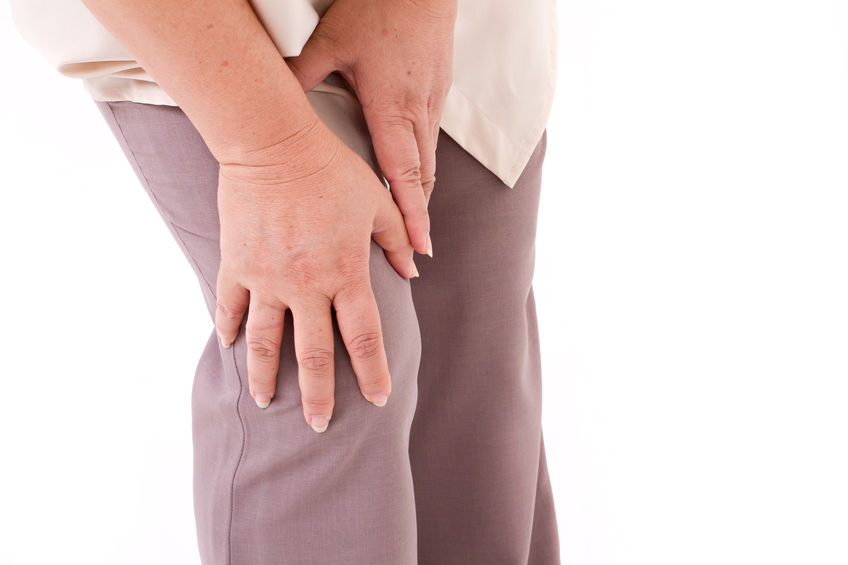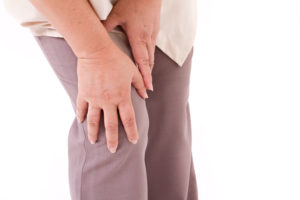
 Knee pain is a common problem for many, particularly those middle-aged and beyond. Osteoarthritis, a condition caused by wear and tear on the cartilage, is a primary cause of knee pain, especially when coupled with weakened muscles and ligaments. If you have a history of injury, that can complicate matters, as the damage will likely be aggravated over time.
Knee pain is a common problem for many, particularly those middle-aged and beyond. Osteoarthritis, a condition caused by wear and tear on the cartilage, is a primary cause of knee pain, especially when coupled with weakened muscles and ligaments. If you have a history of injury, that can complicate matters, as the damage will likely be aggravated over time.
Whether you currently suffer from knee pain or would like to avoid these common problems, a proactive approach can help you prevent further damage or possibly prevent it entirely. As you age, it is important to take note of the areas listed below to give yourself the opportunity to support your knee health now and into the future.
A 3-Pronged Approach to Knee Health
To help maintain the health of your knees, there are three key areas on which to focus. Here is what you need to know about this approach.
Weight Loss
Every additional pound you carry over your ideal weight equals an extra four pounds of pressure on your knees. So, if you’re 15 pounds overweight, that’s an astounding extra 60 pounds of pressure on your knees. Yikes! That’s a heavy load to carry around 24 hours a day, 7 days a week.
To help you determine your ideal weight, it is sometimes wise to give BMI the backseat and consider your waist-to-hip ratio instead. Dr. William Sears of the Sears Wellness Institute recommends keeping your waist circumference below your hip circumference. Additionally, men should aim for a waist of fewer than 40 inches, and women should try to keep theirs under 35 inches.
Even a few pounds of weight loss can lead to a significant reduction in knee pain, and it can also be a major motivator to keep going as you begin to feel more comfortable and notice how quickly your body can recalibrate.
Strengthen the Supporting Muscles
The knee joint is supported by the connected muscles and ligaments, and strengthening those muscles can not only reduce joint stress and increase stability, but it can also enable the knee to absorb and sustain the shocks of everyday activities like walking, taking stairs, and hiking. Over time, this helps reduce pain while also lessening the risk of future injury.
When you begin working the muscles, it’s always best to aim for symmetry but understand we all have some imbalances to contend with. While your doctor can help determine any key point of focus, strengthening muscles like the quadriceps, hamstrings, abductors, adductors, and gluteus medius/maximus can go a long way in delaying or potentially avoiding surgery. And, if surgery is unavoidable, those with stronger muscles often experience a faster and less painful recovery.
Flexibility
As we age, it’s not uncommon for joints to become less mobile. Counteract stiffness with gentle exercises designed to increase the range of motion of the knee joint. While it may not seem intuitive, knee pain (and lower back pain) can often come from tight hamstrings and can be a surprisingly common cause for those who exercise for muscular strength but overlook the need for stretching. It’s all connected! Working with a yoga therapist can help you learn the proper techniques and create an effective and safe home practice that will allow your muscles and connective tissues become or remain supple.
If you experience any form of chronic pain, it is always wise to consult a qualified medical professional before you begin or change an exercise routine to ensure that it’s an appropriate method for you.
Don’t Ignore Your Diet
When it comes to knee health, ongoing vigilance about diet is key. Processed foods can undermine your body’s ability to maintain healthy immune function, so they should be avoided whenever possible. Eating an anti-inflammatory diet that includes plenty of fruits and vegetables can reduce damaging inflammation in the body, which is ultimately a ‘wear and tear’ disease. It can also help your body heal more quickly – an excellent benefit when recovering from injury, or if you must have surgery.
Spicing up your food (and your life!) with turmeric and ginger, two powerhouse anti-inflammatories, can help get you started. Here is a delicious recipe for ginger tea, an anti-inflammatory drink you can enjoy anytime, hot or cold:
GINGER TEA
This ginger tea is one of my favorites – refreshing, stimulating and cleansing, with a robust dose of vitamin C and other antioxidants. It’s a wonderful drink upon waking, as it promotes elimination. And it’s anti-inflammatory properties make it just the thing for relieving stiff, achy joints.
Start by making ginger concentrate.
- 4 c. water
- 4” fresh ginger root
Thoroughly wash the ginger root and slice it thinly (about 30 slices per 4”). Place them in a medium pot with the water and bring to a boil. Simmer covered for a half hour. (I like to let the covered pot sit overnight to let the ginger further steep.)
Once it’s cooled, pour the concentrate into a glass jar and refrigerate. The batch will keep for as long as one week.
For the tea, you’ll need
- Water
- 1/4 c. ginger concentrate (or less, to taste)
- 1/2 lemon, juiced
- Honey, maple syrup or stevia, to taste
Measure the ginger concentrate into a cup or glass. Add 3/4 c. of hot (or room temperature) water and the lemon juice. Stir and sweeten to taste.
If you like pulp, add 1/2 to 1 tsp. of finely grated ginger to the tea.
Take Action Against Knee Pain
By focusing on a healthy diet and incorporating the right form of exercise, you can lessen your knee pain while also lowering your risk of future damage.
If you would like to learn 5 Yoga Poses for Knee Health to help you on your journey, you can download the PDF here. Otherwise, speak with your healthcare professional to see what exercises, diet changes, or therapies may work best for you.